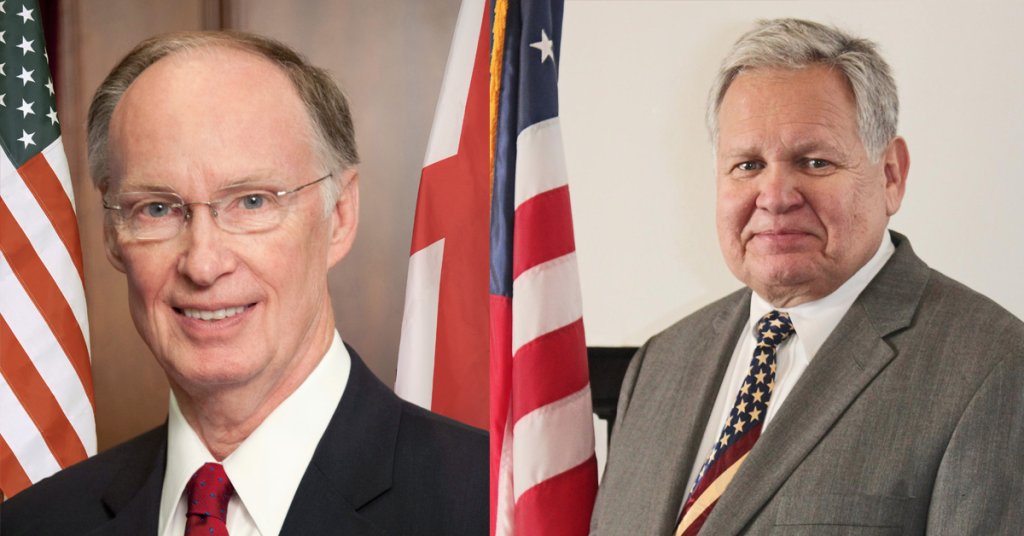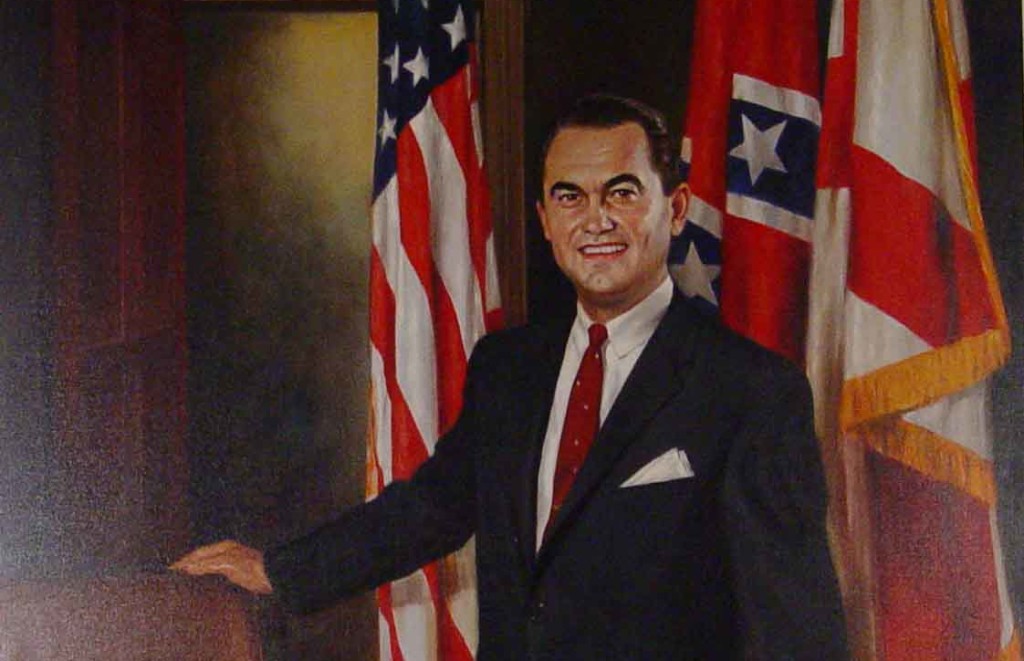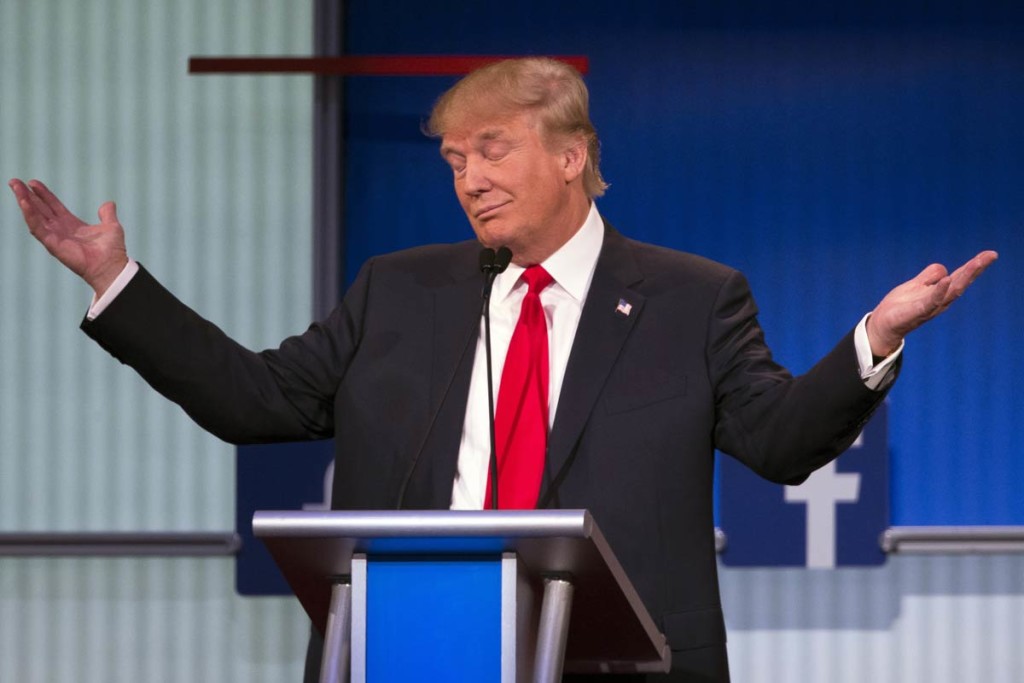Jim Zeigler fighting to stop massive cuts to auditor’s office budget

State Auditor Jim Zeigler says he is being unfairly targeted by budget cuts by Gov. Robert Bentley and legislative allies after speaking out against the governor’s tax and spending proposals – and this week, he is taking his fight to the statehouse in Montgomery. Zeigler will testify before the Senate Finance and Taxation General Fund Committee meeting today at 1 p.m. Central in the Capitol building, where the panel is taking up HB 1, better known as the bill that will enact the state budget. As of Monday morning, the budget proposal contained a whopping 60 percent cut to the office of the State Auditor, the statewide elected ombudsman position occupied by Zeigler since he took office earlier this year, taking over for term-limited Samantha Shaw, like Zeigler a Republican. The 60 percent cut, Zeigler said in an announcement Monday, is by contrast to the mere 10 percent cuts faced by the offices of other statewide positions In a social media post, Zeigler issued the following appeal: Your help is needed quickly to stop the obliteration of the State Auditor’s office. You can contact members of the Senate Finance & Taxation Committee General Fund. Ask them to amend HB1 so that the State Auditor’s budget will be around $1 million instead of the $400,000 it now reads, which is a 60% cut. This committee meets at 1 p.m. today (Mon, Sept 14). It will take up HB1, the general fund budget, which passed the House Friday. HB1 singled out the State Auditor’s office for about a 60% cut that would cripple essential auditing. Other agencies received cuts in the 10% range, which the auditor’s office could live with. We ask for your help quickly in maintaining bare-bones funding for the State Auditor’s office. Amending HB1 to provide the State Auditor $1 million instead of $400,000 would still allow essential auditing and be a cut in line with other agencies. Zeigler also pointed out his opposition to the removal of the Govs. George & Lurleen Wallace portraits from the capitol rotunda, the four-laning of historic North Eufaula Avenue, the closure of 15 state parks, the use of taxpayer funds in campaigns for tax increase referendums and the removal of Confederate items from the capitol museum gift shop in an appeal to supporters Monday. The Senate F&T meeting will be held in room 727 in the statehouse in Montgomery.
Auditor Jim Zeigler announces plan to return portraits of Governors George & Lurleen Wallace to Capitol rotunda

When State Auditor Jim Zeigler addressed the Coosa County Republican Party Tuesday evening, he had a surprising announcement to make – Zeigler told his co-partisans in Rockford that his months-long effort to restore the position of the official portraits of former Gov. George Wallace and and his wife and successor Gov. Lurleen Wallaceb may soon end in victory. Zeigler told the gathering of Coosa GOP-ers his conversations with state officials in charge of historical preservation had “at long last” began to augur progress. “I requested a meeting with the new Acting Director of the Alabama Historical Commission. Because she is a defendant in a pending legal case about the Confederate flag removal, she correctly decided that I should instead meet with the new Chairman of the Commission, Dr. Jim Day of Montevallo,” Zeigler said, telling the assembled crowd he found a receptive audience in Dr. Day. “He has drawn a diagram of my plan to return the Wallace portraits to the rotunda while preserving the spots of the most recent four governors in the second floor rotunda and maintaining the chronological order of the other governors’ portraits,” Zeigler said. “This proposal will be placed on the agenda of a meeting of the Alabama Historical Commission.” “I believe that we are very close to righting this wrong and having the two Wallace portraits returned to where they historically were and legally should be,” he concluded. Zeigler cited a joint resolution – Act. No. 83-57, HJR 10, from February 2, 1983 – passed by the Alabama Legislature which states: BE IT RESOLVED BY THE LEGISLATURE OF ALABAMA, BOTH HOUSES THEREOF CONCURRING, That the official portrait of Governor George C. Wallace is of such significant historical importance that it shall be displayed in the center rotunda of the first floor of the state capitol from this date henceforth. BE IT FURTHER RESOLVED, That a copy of this resolution be sent to Governor Wallace and the Alabama Historical Commission so that they may know of our intent that this historic portrait will be forever displayed. A concurring Act regarding Lurleen Wallace was also passed, a clear sign of the Legislature’s intent on the issue. Zeigler said the news was heartening for those who honor Alabama’s history, and an affirmation the rule of law. “The law is clear. The intent of the legislature is clear,” he concluded. “Some Montgomery bureaucrats decided to revise history and ignore the intent of the legislature to suit their own politically correct agenda. The restoration of the Wallace portraits to the rotunda will right this wrong.”
Darryl Paulson: The zenith of Donald Trump

Here are two critical points concerning Donald Trump. First, he is barely a Republican. Second, he is certainly not a conservative. It is obvious that Trump is leading the field of 17 Republican candidates. His support in four recent polls all had Trump in first place, ranging from a low of 21 percent in the Bloomberg poll to 26 percent in both the Fox poll and the Monmouth University poll. That’s the good news for Trump. The bad news is that Trump may move up a few points, but he has reached the zenith of his support. A recent Economist/YouGov.com survey found that about a third of Americans had a favorable view of Trump and 58 percent had an unfavorable view. Trump will soon be taking the “down” elevator in public opinion polls. The same poll found that when the numbers were broken down by age, race, region, gender and income, Trump’s unfavorables were substantially higher in every category but one: voters 65 and older. His support among African-Americans, Hispanics and women is almost nonexistent. A Rasmussen Poll released Tuesday found strong evidence that the Trump decline may have already started. A survey of 651 likely Republican voters conducted between Sunday and Monday, found that support for Trump has declined from 24 percent to 17 percent in the past 10 days. Trump’s support among men has fallen from 30 percent to 19 percent, and support from women has dropped from 22 percent to 14 percent. Trump is at the top right now because he is perceived as the non-politician in the age where Americans of all political stripes hate the establishment. Voters are frustrated and alienated with politics and politicians, and Trump has successfully appealed to them. Trump’s supporters see him as the outsider who will shake-up the system, much like those who supported George Wallace and Ross Perot were viewed as political mavericks. Trump’s one major contribution to the presidential race us that he has demonstrated to the other candidates that the voters do not like them and their hollow promises one bit. Trump will falter for many reasons. As Larry Thornberry has written in The American Spectator, a leading conservative publication, Trump is “an arrogant, self-satisfied, crude and pompous windbag and bully who grossly overestimates his knowledge, his successes, and, not the least, his charm.” He attacks any critic as “stupid” or “loser,” but has a political glass jaw when he is criticized. Trump will lose because he is running as a Republican this year simply because he feels like it. He quit the party in 1999 saying that “Republicans are just too crazy right.” He then hired Roger Stone, who resigned as Trump’s campaign manager a few days ago, to consider a 2000 run as a Reform Party candidate. In 2009, Trump was back as a Republican. The next year he decided he was an independent and then in 2012, he was once again a Republican. His moving from one political party to another, all for political expediency, might remind Florida voters of Gov. Charlie Crist. Trump is the Bernie Sanders of the Republican Party. Both Trump and Sanders are running to lead a party that neither really calls home and that both have spent more time disparaging than uplifting it. During most of the first decade of the 21st century, the vast majority of the $1.5 million that Trump donated to political candidates went to Democrats, including contributions to Nancy Pelosi and $100,000 to the Clinton Foundation. When asked about his contributions to both Democrats and Republicans, Trump justified them by saying, “When you give, they do whatever you want them to.” I am sure that will appeal to Americans who hate politics for precisely that reason. Trump will lose because he is not a conservative in a party that is dominated by conservatives. In a 2000 book Trump called himself a “liberal” on health care. He supported a single-payer health plan that conservatives loathe, and he was once pro-choice, although he now says he is against abortion. A few years ago, Trump supported a 14.25 percent mega-tax on those making more than $10 million. Now he wants to cut income taxes in half. As Bruce Bartlett, former aide to U.S. Rep. Jack Kemp, said of Trump: “He is nothing if not inconsistent. He’s been on every side of every issue from every point of view as far as I can tell.” If you have not noticed, Trump is also delusional. He calls immigrants “rapists and murderers,” and then says he will win the Hispanic vote. He insults conservative icon Megyn Kelly for attacking him unfairly and having blood coming out her eyes and “whatever.” Trump also believes he will win the votes of women. Republicans, conservatives and Americans deserve better than Trump. “Donald, you’re fired!” Darryl Paulson is Professor Emeritus of Government at the University of South Florida St. Petersburg and resides in Palm Harbor.
Legislators remain guinea pigs for “budget isolation”

I’ll admit it: Not only did I fall for Kyle Whitmire’s click bait headline “The column in which I describe myself naked to get you to read about budget isolation resolutions” I actually read through the entire post. I kept plugging through all 25 mentions of budget isolation and budget isolation resolutions (BIR). Take that John Archibald. Your young apprentice should make you proud. More than one article has been written in recent years about budget isolation so I won’t rehash what it is in detail. That’s not really the intriguing part anyway. What is intriguing, for those of us not around at the time, is how we ended up with the law and the great lengths that its opponents went through to kill it. Further, a look at the how it’s affecting operations these days. A hopeful remedy to years of legislative standstills, the isolation budget process was designed by Gov. Fob James in 1981. Its intention was merely to focus lawmakers’ attention on the budget and ensure that one be adopted early in a legislative session leaving ample time for other important bills. After years of political, legal and legislative wrangling however the issue was placed on the ballot. A September 1982 AP story notes that when James went to vote, the lever for the initiative was locked. Because of the ongoing legal fights and conflicting reports on the legality of the amendment, some counties wouldn’t even allow the measure to be voted upon. Three long years after its inception, in 1984, budget isolation passed and though the public loved it, political insiders and elected officials weren’t fans. Days before the amendment was supposed to go into effect, an AP headline on Feb. 2, 1985 read: “Alabama legislators guinea pigs for ‘budget isolation.’” It was clear Fob’s landmark legislation wasn’t for everyone. Opinions were strong throughout the article with several people quoted clearly displeased. When asked about his opinion on budget isolation then-Secretary of the Senate (1963-2011) and former state Rep. McDowell Lee called it “the worst piece of legislation passed in my lifetime. … It is the worst piece of legislation for the orderly process of the Legislature.” There were other skeptics as well. Then-Sen. Charles Bishop said, “I don’t think it will make much difference in the flow of legislation, but it could affect what flows.” Meanwhile, then-Rep. Jimmy Clark thought budget isolation was going to “be a roadblock.” The general consensus among the elected officials was that Alabama constituents didn’t really understand what they had agreed to in passing budget isolation. “I think what the general public was saying when they passed budget isolation is they would like to see the budgets passed without a lot of arm-twisting, and they would like to see a lot less trashy bills passed,” Bishop said. Sure enough, even in its very first year budget isolation was a failure . The education budget passed on May 1, the 25th legislative day, and the general fund budget passed on the 29th day, of the 30-day session. The goal of passing the general fund and education budgets early in session didn’t work, and then Gov. George Wallace found himself calling for a Special Session three times in 1985. Thus began the myriad problems stemming from budget isolation. Which brings us to where we are today. Here, 30 years after the very first session under budget isolation, the Alabama Legislature is still forced to make end-runs around an amendment that has never functioned as James intended. With only 12 session days remaining, after Thursday, it is once again looking as though it’s headed into Special Session later this year as the education budget has only passed the Senate and General Fund budget has yet to be debated. “But the joke is on the voters since with no mandated date to pass the budgets, it’s business as usual in the Legislature, albeit business conducted a bit more awkwardly than in the past,” Tommy Stevenson, then-associated editor of The Tuscaloosa News, wrote in the paper on Feb. 24, 1985. The quote still rings true these many years later. The question I pose is: Can and will the charade that is budget isolation continue indefinitely?


